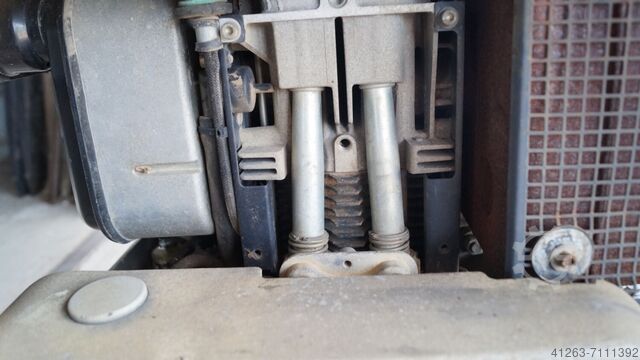Used Trough Vibrator for sale (2,603)
 Dn10 4Es
Dn10 4Es Vibratory feed conveyor
LarkapDMB50-0
 Heerjansdam
Heerjansdam Vibratory plate
AJCEACP-20 Vibration Plate Compactor
 Grünkraut
Grünkraut Troughed belt conveyor for bulk material
S&F GmbHMFB-500/5

+44 20 806 810 84
 Wiefelstede
Wiefelstede Vibratory finishing machine pre-filter system
unbekannt1400/620/H920 mm
 Wald
Wald Vibratory finishing system round dryer
RöslerR420 / RT150
Discover more used machines
 Babberich
Babberich Vibratory grinding machine 220 L
RöslerR 220 EC
 Walkeringham
Walkeringham Vibratory conveyor
DodmoresV-C
 Murr
Murr Vibratory finishing machine
RöslerR 500/1500 TE-15
 Eisenberg (Pfalz)
Eisenberg (Pfalz) Vibratory finishing machine
PERSTurbo-Line 120
 Böblingen
Böblingen Vibratory plate
ELMAGRPB30-50
 Włocławek
Włocławek Vibratory conveyor
Podajnik wibracyjny9m x 0,8m
 Babberich
Babberich Vibratory grinding machine 120 L
RöslerMINI 120
 Mleczków
Mleczków Conveyor belt Troughed conveyor belt Conveyor belt
Forderband Transportband Conveyor
 Jablunkov
Jablunkov Vibratory finishing machine
RöslerFKS 15.1 A2
 Vejle
Vejle Vibratory finishing system
Pers GroupTurbo - Line 120 S
 Böblingen
Böblingen Vibratory plate
ELMAGRPD24-50
 Włocławek
Włocławek Orienting vibratory feeder
FAMIFS
 Zona Industriale "scerne"
Zona Industriale "scerne" TROUGHFEED CNC INSERTING-GLUING MACHINE
ALBERTIBASIC
 Magdeburg
Magdeburg Vibratory plate
Wacker NeusonDPU 6555 He
 Nederweert
Nederweert Filling bunker with bunker vibratory feeder
BofarVB10,5
 Vejle
Vejle Round vibratory Vibra-Line B60M
Pers GroupVibra - Line B60M
 Włocławek
Włocławek Vibratory feeder
Vib-tech Processing BVpodajnik wibracyjny
 Magdeburg
Magdeburg Vibratory plate
Wacker NeusonDPU 6555 He
 Vejle
Vejle Maize dryer vibratory finishing system
Pers GroupVibra-Dry DK 200 WT (Stahlboden)
 Vejle
Vejle Vibratory finishing system
Pers GroupVibra-Line 150 DK
Used Trough Vibrator (2,603)
Search Machineseeker now with more than 200,000 used machines:Browse through the most popular machine descriptions:
This may be of interest to you

+44 20 806 810 84











































































































































